Kyoozan Honrenji Temple
Ushimado's most famous tourist attraction is this temple. The main temple
building (on the left in photo at right) dates from 1492 -- how many Spanish
building are left from the year Columbus sailed?
|
 |
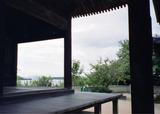 |
The temple's placed up on a hill overlooking the Seto inland
sea, so it's a great place to watch the ocean from. Clearly, those priests
sited these things carefully. |
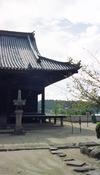 |
As always at a Japanese temple, the woodwork and aesthetics
are gorgeous, and a pleasure to take in. It got less pleasureable, of course,
when the busloads of Japanese tourists showed up around 11am (I quit taking
pictures at that point!) |
 |
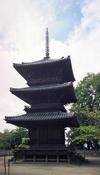 |
But the thing I really liked about Honrenji was this pagoda, built in
1690. It's just a perfect small structure; I walked around taking pictures
of and sketching it for about half an hour. |
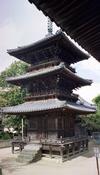 |
| |
 |
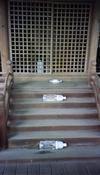 |
This is not litter; I noticed water bottles like this at a number of Buddhist
temples. I asked my Japanese friends about it, and they knew it was a thing
you do, but not the specific ritual meaning behind it. The photo at right
is one of the portable shrines, currently residing safely in one of the
temple buildings. |
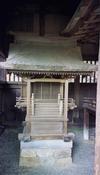 |
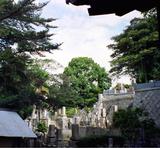 |
The cemetery includes a masoleum with ashes of
Nichiren and Nichiryu (somewhere, I don't know if it's one of these structures
or not). Nichiren and Nichiryu are the two Buddhist priests who incorporated
much animistic and naturalistic beliefs into the newly-imported Buddhism
in the 1400s, thus producing the relatively smooth integration of Buddhism
and Shintoism that prevails in Japan today. There have been several periods
where the religions became the focal point of power struggles, though --
for instance, the emphasis on 'State Shinto' in the militaristic period
leading up to WWII. |









